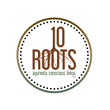Continued here are the other therapies done during Panchakarma, after preparation: basti and nasya, two very powerful and effective Ayurvedic therapies. Please read the first article before reading this one!
Basti: Oil Enema
Vata's predominant site is the colon. So during an Ayurvedic basti, liquid herbal concoctions of sesame oil and other herbs are inserted into the colon and held in there for up to one hour. All of these details, such as which oil and herbs, depending on the unique recommendations for each individual.
Basti is one of the most effective Ayurvedic healing therapies for Vata disorders. Depending on the extremity of an imbalance, many enemas over a certain period of time could be helpful. A basti relieves constipation, bloating, chronic fevers, chronic colds, sexual disorders, kidney stones, backache, sciatica, arthritis, rheumatism, gout, muscle spasms and chronic headaches.
Since Vata is the force behind either the elimination or holding of feces and other bodily functions, when there is disease or sickness present, Vata is usually at the root of the problem. Hence why basti is so important!
There are 8 main types of basti each with their own indications and contra-indications. They are listed below.
1. Anuvasana (Oil Enema): used in pure Vata disorders and when a person is having excess hunger or dryness in the skin and body.
2. Niruha-Asthapana (Herbal Enema): used when gastrointestinal problems, gout, chronic fevers, urinary issues, low appetite, hyperacidity, and heart diseases are present.
3. Uttara Basti: used for semen and ovulation disorders, painful urination or bladder infections. For women, insert the herbal liquid basti into the vagina with a douche or other instrument. Then take a warm bath. For men, it is inserted through the urethra with the help of an Ayurvedic practitioner.
4. Matra Basti (Daily Oil Enema): used by someone emaciated from overwork or too much exercise, heavy lifting, walking and sexual activity or someone with chronic Vata disorders. It doesn't require a strict diet or daily routine and can be used all year round. It increases strength and helps eliminate toxins.
5. Karma Basti: a prescription of 30 bastis of both oil and herbal liquid.
6. Kala Basti: a prescription of 15 bastis: 10 of oil and 5 of herbal liquid.
7. Yoga Basti: a prescriptions of 8 bastis: 5 of oil and 3 of herbal liquid.
8. Bruhana Basti: used for providing a large amount of nutrition at once. Traditionally warm milk, meat broth, bone marrow soup and herbs in a liquid decoction like shatavari or ashwagandha are used.

When Should I Do Basti?
- Constipation
- Low backache
- Gout
- Rheumatism
- Sciatica
- Arthritis
- Nervous disorders
- Chronic headaches
- Emaciation
- Muscular atrophy
When Shouldn't I Do Basti?
- Diarrhea
- Bleeding rectum
- Chronic indigestion
- Breathlessness
- Diabetes
- Chronic fevers
- Severe anemia
- Pulmonary tuberculosis
- When you are over the age of 65
- When a child is younger than 7
Nasya: Cleansing the Nose with Oil
The nose is the doorway to the brain and to consciousness. It's also very easy for bacteria and other harmful pathogens to collect there.
Prana enters the body through an inhale. Prana is already in the brain and supports sensory and motor functions. Prana also governs memories, concentration, and all intellectual activities. Imbalanced prana creates headaches, convulsions, loss of memory, and reduced sensory perception.
There are six main types of nasya, as listed below.
1. Pradhamana Nasya uses dry powders rather than oil. They are blown into the nose with a tube. Pradhamana Nasya is mainly used for Kapha types of diseases with symptoms like headaches, colds, nasal congestion, sinusitis, tumors, and epilepsy. Traditionally, powdered Brahmi is used.
2. Bruhana Nasya uses ghee, oil, salt, Shatavari Ghee, Ashwagandha Ghee, and milk to relieve vata disorders. It is said to get rid of migraines, anxiety, dizziness, and loss of smell.
3. Shaman Nasya is used mainly for Pitta-type disorders such as thin hair, conjunctivitis, and ringing in the ears. Generally, medicinal teas and oils are used.
4. Navana Nasya is used in Vata-Pitta or Kapha-Pitta disorders and is used with herbal oils.
5. Marshya Nasya: plain nasya with either ghee or a plain oil like sesame.
6. Prati Marshya: This is the daily practice of nasya to relieve stress and support clear thinking.
When Is Nasya Right For Me?
- Stress
- Emotional imbalances
- Stiffness in the neck and shoulders
- Dryness of the nose
- Sinus congestion
- Migraines
When Is Nasya Not Right For Me?
- Chronic sinus infections
- During pregnancy
- When someone is below 7 years old or over 80 years old
![]()
Disclaimer
All views and information shared here are only for the sharing of Ayurvedic knowledge. Please do not try or prescribe or take any of the remedies and suggestions here without talking to your regular, qualified doctor. Kottakkal Ayurveda and no other person associated with Kottakkal is responsible for unwanted side-effects or contraindications in your health.

